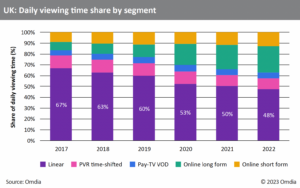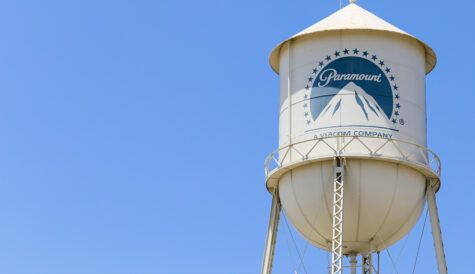UK broadcasters target CTV ad market with Freely
Consumers still want live TV, but its role is changing. Despite a decline, linear TV still accounted for almost 50% of daily average viewing time in the UK during 2022. The shift toward online viewing continues apace in the UK, but consumers still have a significant appetite for the lean-back, traditional TV viewing experience. In fact, the conjunction of these two factors is a key driver of the rapidly growing free ad-supported streaming TV (FAST) segment, which Omdia forecasts will surpass $500m in revenue in the UK by 2028.
 Freely will update the concept of linear TV for today’s online-first media market, enabling broadband-only households to continue to watch live free-to-air TV channels via streaming on their smart TVs. Although these represent just 15% of TV households, and Freeview and Freesat will remain operational, the increased convenience and prevalence of internet delivery will likely drive more viewers to consume live TV in this way. Although this may alleviate the direct threat of FAST to UK PSBs, live TV consumption on Freely will continue to experience downward pressure from on-demand alternatives.
Freely will update the concept of linear TV for today’s online-first media market, enabling broadband-only households to continue to watch live free-to-air TV channels via streaming on their smart TVs. Although these represent just 15% of TV households, and Freeview and Freesat will remain operational, the increased convenience and prevalence of internet delivery will likely drive more viewers to consume live TV in this way. Although this may alleviate the direct threat of FAST to UK PSBs, live TV consumption on Freely will continue to experience downward pressure from on-demand alternatives.
Freely will be “built-in to the next generation of smart TVs” and will likely come at the electronic program guide level. Crucially, Freely’s launch comes in conjunction with new legislation concerning the mandatory prominence of PSB content and services on smart TV platforms. This could hamper the UK aspirations of CTV manufacturers, which are increasingly focusing on their own video services and advertising.
The shift to internet-delivered TV offers a potential revolution in addressable linear TV advertising, a small but growing segment effectively dominated by Sky’s AdSmart offering in the UK.
However, although the opportunity exists for dynamically targeted advertising on Freely, there is no indication that this is part of the immediate plan. Even if it is, numerous hurdles would need to be overcome before it could become a reality. This includes questions over inventory ownership and the fragmentation of audiences and user data across broadcasters’ linear and on-demand channels. Data sharing partnerships—facilitated through data clean room technology—or a consortium approach to data sharing, ad sales, and ad technology are potential options for broadcasters to pursue.
There is also the possibility that most advertising on Freely will remain identical to that seen on traditional broadcast TV, a format that remains highly popular to brands seeking mass simultaneous reach. However, the declining health of UK linear TV advertising—which Omdia preliminarily expects to fall by around 12% in 2023—suggests that introducing an increasingly data-driven and addressable TV advertising environment on Freely is not only possible but sorely needed.
Matthew Bailey is principal analyst, media and entertainment at Omdia.



